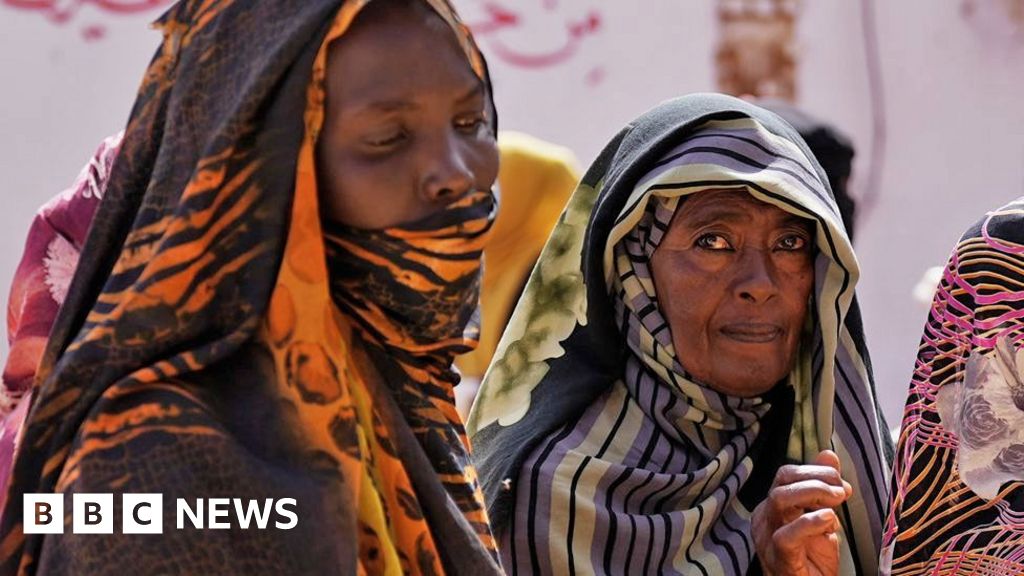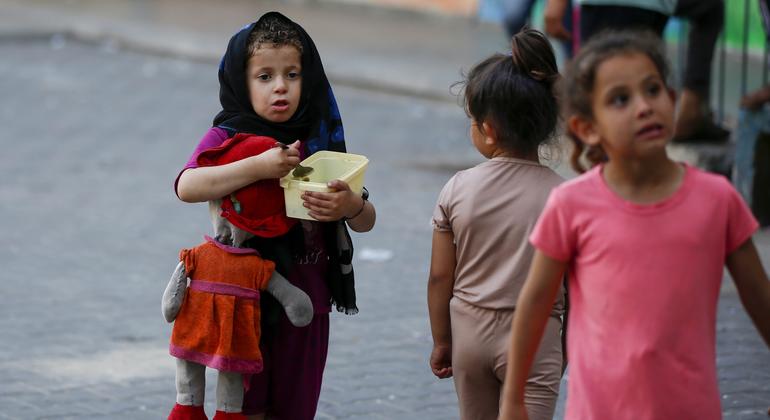(Image Credit: B'Tselem)
The recent severe cuts in international aid (particularly from the United States), escalating conflict, and geopolitical self-interest has plunged both Gaza and Sudan into a humanitarian abyss. While their geographical and political landscapes differ significantly, their shared experience of systemic deprivation and relentless erosion of basic human rights shows a shocking link between the two current crises.
The Trump administration’s recent elimination of the United States Agency for International Development (USAID) and other relief organizations has not merely reduced assistance; it has effectively dismantled critical lifelines, leaving millions teetering on the edge of survival in regions already devastated by conflict and instability.
After 56 years of occupation and a 18-year blockade by Israel and Egypt, the people of Gaza have suffered under a protracted state of emergency, turning the Strip into what many have described for decades as an open-air prison. Economic development was stifled and movement restricted, with full dependence on external aid. It’s far worse now, with all food and medical aid now systematically blocked by Israel. As of April 2, 2025, Israel has allowed no food, fuel, medicine and other aid to enter the strip. Most bakeries have now closed.
The cyclical violence between Israel and Hamas had already been difficult for Gazans. However, following Hamas’s attack on October 7, 2023, the ensuing Israeli bombardment of Gaza has now destroyed virtually all vital infrastructure in the enclave—hospitals, schools and homes—leaving the population both traumatized and destitute. A January 19 ceasefire offered the people some hope and respite, but Israel’s collapse of that ceasefire has now led to some of the most violent and brutal assaults by Israel on the enclave since October 7.
Israeli bombings and blockade of medical supplies has collapsed the healthcare system. Essential medications, including those for chronic diseases, are mostly unavailable, and the capacity to treat trauma injuries is severely limited (including anaesthesia for amputations). The lack of clean water and sanitation poses a grave threat to public health, increasing the risk of waterborne diseases in a population already vulnerable to innumerable health challenges.
The psychological toll on Palestinians in Gaza from living under constant threat of violence and deprivation is immeasurable. This is particularly true for children who have known nothing but conflict and confinement.
Then there is Sudan. South of Gaza, in northeast Africa, Sudan's descent into chaos serves as its own reminder of the devastating consequences of political instability on an entrapped civilian population. Beginning on April 15, 2023, the conflict between the Sudanese Armed Forces (SAF) and the Rapid Support Forces (RSF) unleashed a wave of violence that has displaced millions, creating one of the world's largest internal displacement crises. More than 12 million Sudanese have been forced from their homes.
The breakdown of essential services for Sudanese civilians—healthcare, education and sanitation—has created a humanitarian catastrophe of epic proportions. Agricultural production has been severely disrupted, leading to widespread food insecurity and the looming threat of famine in a country once considered the potential breadbasket of Africa.
The violence has also given rise to widespread sexual and gender-based violence, further compounding the suffering of women and girls. The displacement crisis has strained the resources of neighboring countries, creating a regional humanitarian emergency with far-reaching implications for stability across East Africa. And again, in the midst of all of this, the U.S. Trump administration has closed USAID, eliminating one of the largest sources of food aid for the Sudanese population.
Parallel Paths of Suffering
Despite their distinct contexts, Gaza and Sudan share a common nightmare: the near-wholesale denial of human rights and the elimination of basic human needs. In both regions, civilians are caught in the midst of violence, bearing the brunt of brutal land grabs and the failure of international law. The lack of access to food, water and healthcare has created a state of perpetual crisis, where survival is a daily struggle.
"What we're witnessing is not merely a temporary shortage of resources, but a fundamental restructuring of the international aid architecture that threatens to abandon millions to their fate," explains Dr. Helena Moreiro, a specialist in humanitarian crises at the London School of Economics.
In the face of overwhelming challenges, and often at great risk to their personal safety, humanitarian workers continue to do yeoman’s work in providing life-saving assistance in Gaza and Sudan. They operate in extremely difficult and dangerous environments, facing logistical challenges, security threats, and now significant funding shortfalls.
In Gaza, while there are a number of organizations that continue offering services to Palestinians, Israel’s blockade on food and medical aid increasingly limits what they can provide. Médecins Sans Frontières, the World Health Organization, Save the Children, the Palestinian Red Crescent Society, and Doctors Without Borders are among the organizations delivering help to Gazans.
But while funding for all aid organizations has been impacted by the recent cuts, some of those providing the most critical aid are suffering the biggest shortages. Those include UNRWA, Palestine Children's Relief Fund, and World Central Kitchen.
Despite immense challenges, the United Nations Relief and Works Agency for Palestine Refugees in the Near East (UNRWA) remains the largest organization, and one of the most reliable, providing humanitarian assistance, healthcare and education, and serving as a lifeline for the millions of Palestinian refugees in Gaza, the West Bank and East Jerusalem.
After Israel accused UNRWA of providing cover for Hamas (without offering any substantiation for those claims and accusations), it then banned UNRWA from operating on any Israeli territory or communicating with Israeli staff or officials. Since then, some countries have withheld funding, creating severe funding challenges for UNRWA in providing for the people. Despite that, UNRWA still provides essential services to Palestinian refugees, while the humanitarian situation in Gaza continues to deteriorate dramatically.
Here you’ll find UNRWA’s most recent update of its services for Palestinians in Gaza, the occupied West Bank and East Jerusalem (as of March 2025).
And in Sudan, the International Rescue Committee and Airlink, Inc. are among those organizations doing excellent work for Sudanese in need. Both have received very high reliability ratings from Charity Navigator.
The aid workers from these organizations are the heroes of the humanitarian crises of our time, providing a lifeline to millions abandoned by the international community. Their work is a testament to the power of compassion and commitment in the face of overwhelming adversity.
But they need money to do their work. Please help if you can. Links are below.
DONATE FOR GAZA
UNRWA: unrwausa.org
Palestine Children’s Relief Fund: https://pcrf-rescue.net/
DONATE FOR SUDAN
International Rescue Committee: https://help.rescue.org/donate/sudan
Airlink, Inc: https://airlinkflight.org/responses/gaza-humanitarian-crisis/
As funding cuts deepen and needs continue to escalate, the international community faces a profound moral challenge: will it recommit to supporting the world's most vulnerable populations, or will it continue the dangerous trajectory of disengagement that threatens to condemn millions to suffering and death that might otherwise be prevented?










